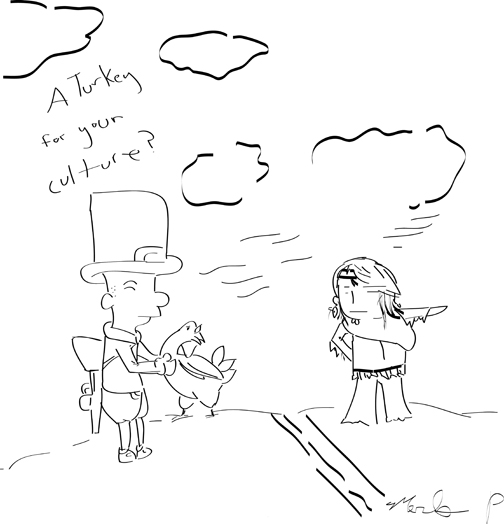This past Thursday may have been Thanksgiving for many families, but did you know that “Unthanksgiving Day,” also known as “The Indigenous People’s Sunrise Ceremony,” is celebrated by some to honor the indigenous people of the Americas and to promote their rights. It coincides with a similar protest, the National Day of Mourning, held in Massachusetts. These events commemorate the survival of Native American peoples following the settlement of Europeans, which led to enormous losses among Indians from disease, warfare and social disruption. In contrast to the traditional Thanksgiving story in which the Pilgrims amicably shared a meal with Native Americans, here are three myths you probably learned in elementary school, debunked:
Myth #1: After the first Thanksgiving in 1621, Americans have been celebrating Thanksgiving every year since.
Fact: Historians know there was another feast in the colony in 1623-but it was held earlier in the year. As for the 1621 feast being the first Thanksgiving, nobody at the time thought of it as the start of a new tradition, and there had been similar gatherings earlier elsewhere. Jump to 1863: President Abraham Lincoln issued a proclamation making the fourth Tuesday of November as a national holiday. Franklin D. Roosevelt later moved the annual Thanksgiving holiday to the fourth Thursday of November to help the economy by making the Christmas shopping season a little bit longer.
Myth #2: The Pilgrims invited the Indians to celebrate the First Thanksgiving.
Fact: According to oral accounts from the Wampanoag people, when the Native people nearby first heard the gunshots of the hunting colonists, they thought that the colonists were preparing for war and that Massasoit needed to be informed. When Massasoit showed up with 90 men and no women or children, it can be assumed that he was being cautious. When he saw there was a party going on, his men then went out and brought back five deer and lots of turkeys.
Myth #3: The Pilgrims and Indians became great friends.
Fact: A mere generation later, the balance of power had shifted so enormously and the theft of land by the European settlers had become so egregious that the Wampanoag were forced into battle. In 1637, English soldiers massacred some 700 Pequot men, women and children at Mystic Fort, burning many of them alive in their homes and shooting those who fled. The colonies of Connecticut and Massachusetts Bay observed a day of thanksgiving commemorating the massacre. By 1675, there were some 50,000 colonists in the place they had named “New England.” That year, Metacom, a son of Massasoit, one of the first whose generosity had saved the lives of the starving settlers, led a rebellion against them. By the end of the conflict known as “King Philip’s War,” most of the Indian peoples of the Northeast region had been either completely wiped out, sold into slavery, or had fled for safety into Canada. Shortly after Metacom’s death, Plymouth Colony declared a day of thanksgiving for the English victory over the Indians.
Source: Oyate.org





















































